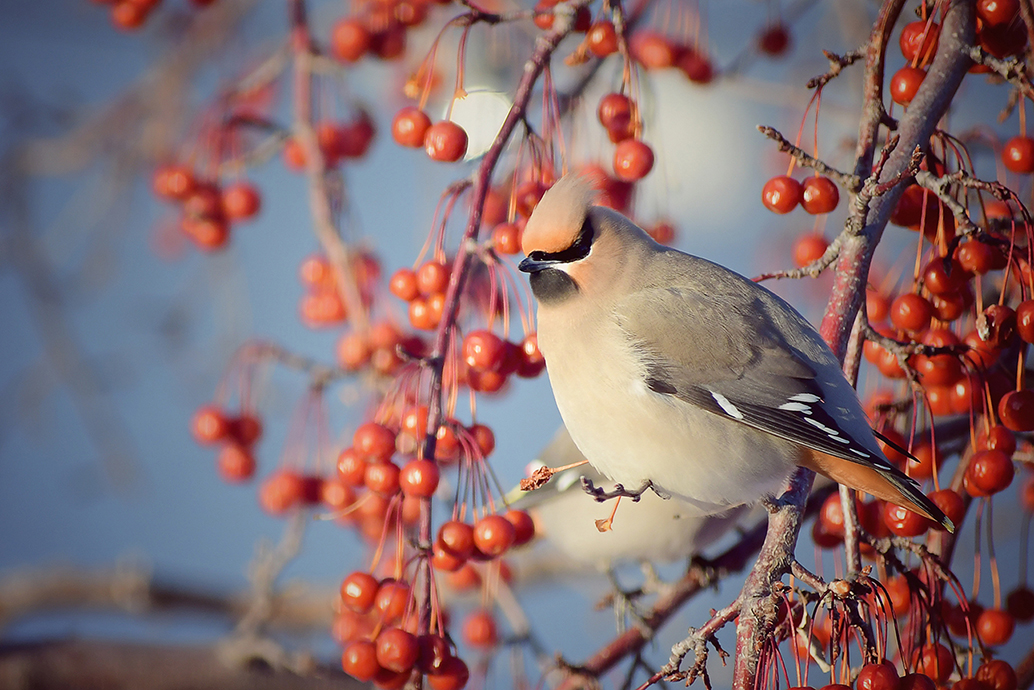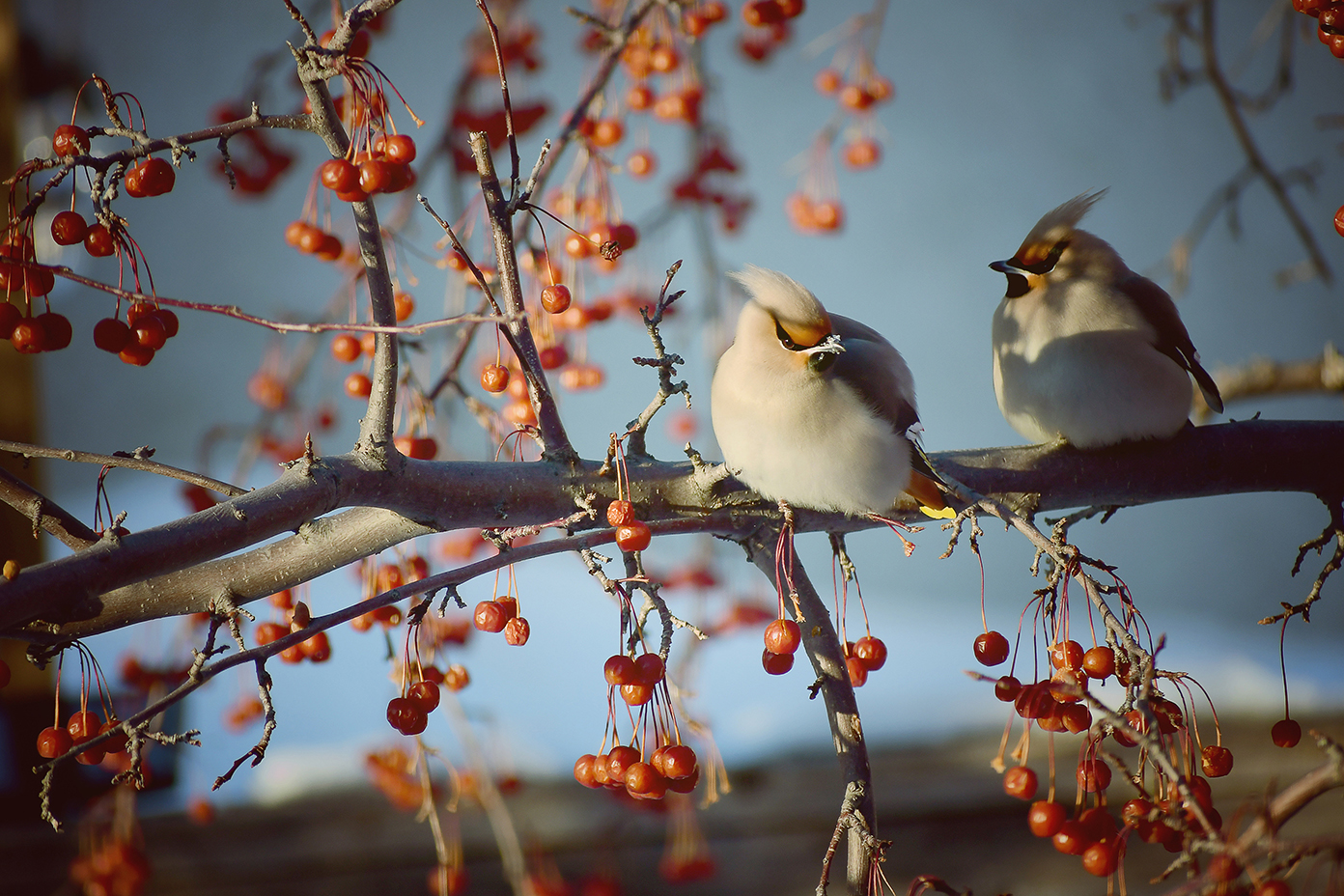We’re very fortunate here in Canada to have access to diverse wildlife – even within city limits. Among the many bird species observable directly from my kitchen window are the winter visitors – Bohemian Waxwings. True to their name, Bohemian Waxwings are free spirits that lead a nomadic lifestyle most of the year, traversing North America in large flocks. You never know when they’re going to show up in your backyard.
There are only three waxwing species in the world: the Bohemian Waxwing of North America and Eurasia, the Cedar Waxwing of North America, and the Japanese Waxwing of Eastern Asia.
They come and go in search of frozen fruit and berries, announcing their arrival with high-pitched voices. Like other nomadic birds, waxwings don’t have a true song. They chomp through berries – ash berries are their favourite – and other fruit, which make up about 80% of their diet. They can consume them in a matter of minutes before suddenly moving on in search of the next tree. Waxwings eat staggering amounts of fruit, up to 800–1,000 berries a day – roughly twice their body weight. There are even records of them becoming quite intoxicated after eating too many fermented berries!
Interestingly, their bright red and yellow wing tips are determined by pigments from the fruit they eat, and those tips grow larger as the bird ages. The “waxwing” in their name refers to these characteristic red, wax-like tips on the wings.
Bohemian Waxwings breed in boreal forests, nesting in coniferous trees. During this time, their diet shifts to insects and the sap of birch and maple trees to feed their young.
During mating season, males and females can often be seen repeatedly passing food to one another. However, regardless of a male’s civility, females tend to favour older males with more red tips on their wings.
The waxwings’ tree acrobatics and playful behaviour are a joy to watch – be sure to pause and enjoy them the next time the opportunity presents itself!
By: Anna Aráoz

